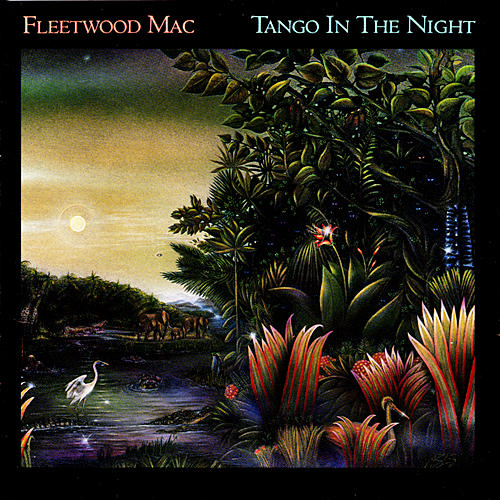
Tango in the Night (1987)

1. Big Love
2. Seven Wonders
3. Everywhere
4. Caroline
5. Tango in the Night
6. Mystified
7. Little Lies
8. Family Man
9. Welcome to the Room...Sara
10.Isn't it Midnight
11.When I See You Again
12.You and I (Part 2)
By the mid-1980s, few would have bet on another Fleetwood Mac album—least of all the band themselves. The glory days of Rumours and Tusk seemed a lifetime away, solo careers had siphoned off creative energy, and the group was, by all accounts, running on fumes. That they managed to produce Tango in the Night at all is surprising. That it turned out to be one of their strongest post-Rumours efforts is nothing short of astonishing.
The project began, rather unintentionally, as a solo album for Lindsey Buckingham. It soon evolved—partially due to Mick Fleetwood’s financial crisis and partially because, somehow, the pieces still fit—into a full-fledged Mac release. And what emerged was a sleek, shimmering pop album that embraced the gloss of the 1980s while still managing to sound distinctly like Fleetwood Mac.
If Mirage had felt like a retreat, Tango in the Night was the return to form—just dressed in a new suit. The songwriting is taut, the production meticulous, and the performances, for the most part, inspired. That said, it’s also an album shaped as much by absence as presence. Behind the studio perfection lies a band at the breaking point.
Christine McVie, as ever, remains the band’s melodic anchor. There’s a quiet brilliance to her work here—accessible yet never pandering. Everywhere is the purest pop song the band ever recorded, breezy and effervescent without losing its composure. Little Lies, co-written with then-partner Eddy Quintela, became one of the group’s biggest hits—rightly so, with its hypnotic groove and layered vocal hooks. Even lesser-known cuts like Isn’t It Midnight carry her hallmark precision: cool, confident, and effortlessly listenable.
Lindsey Buckingham, meanwhile, turns in what is arguably his most successful balancing act—avant-garde tendencies reined in just enough to land squarely in the mainstream without sacrificing his edge. Big Love, the album’s leadoff single, is a triumph: breathless, intricate, and unmistakably his. His other tracks—Caroline, Family Man, Tango in the Night—blend his trademark rhythmic gymnastics with lush, studio-crafted textures. For all his quirks and studio obsessiveness, Buckingham managed here to strike the perfect equilibrium between accessibility and innovation.
Then there’s Stevie Nicks, whose contributions here feel like late additions—and with good reason. During the bulk of the recording process, Nicks was largely absent, entering rehab while the rest of the band continued without her. When she did return, her presence was more symbolic than substantial. She contributes three songs, but only one—Seven Wonders—lands with any real impact. It’s catchy enough and charted well, but lacks the emotional depth of her earlier work. When I See You Again is fragile and fleeting, more sketch than song, while Welcome to the Room...Sara, a somber reflection on her time in rehab, may be her weakest contribution to any Fleetwood Mac album. Lyrically awkward and musically lifeless, it stands in stark contrast to the rest of the album’s polish.
What’s notable about Tango in the Night is how well it holds together despite the lopsided contributions. Nicks may have faltered, but Buckingham and McVie compensate with such consistency that the overall result is remarkably cohesive. If the record leans heavily into 1980s production tropes—synths, reverb, digital sheen—it does so with such command that even its more dated elements feel intentional rather than accidental.
Ultimately, Tango in the Night is an album born from contradiction: a band simultaneously united and fractured, past its peak yet still capable of brilliance. It’s not their most iconic album, nor their most daring—but it may be their most unlikely success. For fans of McVie and Buckingham, it’s an absolute gem. For devotees of Nicks, it’s understandably a letdown. But for the band as a whole, it was one last moment of genuine creative harmony—before it all fell apart once again.
Go back to the main page
Go To Next Review